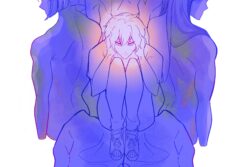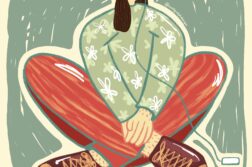TW: Body dysmorphia
Body dysmorphic disorder (BDD) is defined by the NHS as a mental health condition, where a person is preoccupied with flaws in their appearance, and it takes a toll on their day-to-day life. It can have serious consequences on your work, relationships, and social life.
It’s a disorder that is concealed by normal ideas of insecurity, meaning I’ve felt afraid to open up about it. The seriousness of the intrusive thoughts is often ignored. The Mind charity notes that it has an adolescent onset, normally at the age of 13, thus people may dismiss the symptoms as related to hormones and coming of age. But body dysmorphia can be debilitating and shouldn’t be disregarded.
BDD has links to other mental health problems, such as depression, anxiety, OCD and self-harm. Like with many other mental illnesses, it doesn’t always come alone. Studies have shown that it’s a complex disorder and can be caused by a variety of factors. Both biological and environmental factors can contribute to the development of BDD, such as genetic predisposition and neurological factors. The scientific evidence of causation highlights the complexity of this mental illness.
My first memories of BDD were in primary school, where I would compare myself to the other children and often felt overwhelmingly sad due to my appearance. I used to cry when my mother got out a camera; my little sister would pose, and I would avoid it with every bone in my body. When I was 12, a boy used to refer to me as a ‘hippo’ and this humiliating comment triggered shockwaves in my brain. I thought I was fat and ugly, and started to wish every day that something would change.
A symptom of BDD that I displayed was checking myself in the mirror constantly. I couldn’t count the times in a day that I would sneak away from my social life or school life to the bathroom and just stare at myself. I was constantly confused with my appearance as every time I looked at myself, my facial features or body had morphed into someone new. Not only that, but I thought that I was repulsive and just wrong. There was never a moment where my brain was quiet.
My experience with BDD was a destructive time in my life. I abused my body, either starving it or drinking ‘fitness’ drinks to attempt to gain control. I also wore a lot of make-up and prayed that it would make me fit in. I thought that I would be unlovable because of my appearance and dreamt of one day having enough money so that I could pay for plastic surgery, so I could be content with myself. This constant despair with my looks caused me to sink into periods of depression and anxiety. It broke down a lot of relationships in my life and that’s what inspired me to change.
A combined effort of CBT and school counselling led me to recovery. It helped me understand the addictiveness of these thoughts and that the only way to start moving on was to challenge and ignore them. Understanding the root causes of this disorder helped me understand how I was feeling and for once, I didn’t feel alone. Recovery is hard, but every day I get closer to loving myself. Thanks to scientific research into BDD, I’m currently living a much better and healthier life, and I’m doing things that I never thought would be possible.
If you are suffering from body dysmorphia, know that it is treatable, and you don’t have to suffer alone. Booking an appointment with your GP is the first step.



